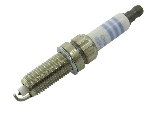Spark Plug Guide for All MINI Cooper Models
The technology of spark plugs has advanced significantly, and contemporary plugs are designed to live far longer than previous models. They do, however, degrade over time and can have an influence on the efficiency of your engine. Although the factory recommends replacing your MINI's spark plugs after 100,000 miles, most owners replace theirs considerably sooner. Because a worn spark plug can reduce your vehicle's fuel economy, we recommend that you examine them on a regular basis and replace them as soon as they begin to exhibit symptoms of wear.
For ignition upgrade to include coil and plugs, take a look at our Mini Cooper Ignition Maintenance and Upgrade Application Guide
More Information About Spark Plugs You May Want To Know
Spark plugs are one of the most misunderstood components of an engine.
Numerous issues have been raised throughout the years, leading to much confusion among the general public. This handbook was created to aid the technician, enthusiast, or racing mechanic in understanding, utilizing, and troubleshooting spark plugs. It is intended for use by anybody who works with or around engines. Unless otherwise specified, the material in this handbook applies to all types of internal combustion engines, including two-stroke and rotary engines, high-performance and racing engines, and street cars.
Considering that spark plugs are the sole "window" into your engine (and therefore the only eyewitness to the combustion chamber), they may be a very useful diagnostic tool. The spark plug acts similarly to a thermometer in that it indicates symptoms and conditions related to the engine's functioning. The expert tuner can examine these symptoms to discover the main cause of many issues, as well as the air/fuel ratios to be used in the engine.
SPARK PLUG BASICS:
The spark plug has two primary functions:
- To ignite the air/fuel mixture
- To remove heat from the combustion chamber
Spark plugs transmit electrical energy that turns fuel into working energy. A sufficient amount of voltage must be supplied by the ignition system to cause it to spark across the spark plug's gap. This is called "Electrical Performance."
The temperature of the spark plug's firing end must be kept low enough to prevent pre-ignition, but high enough to prevent fouling. This is called "Thermal Performance", and is determined by the heat range selected.
It is important to remember that spark plugs do not create heat, they can only remove heat. The spark plug works as a heat exchanger by pulling unwanted thermal energy away from the combustion chamber, and transferring the heat to the engine's cooling system. The heat range is defined as a plug's ability to dissipate heat.
The rate of heat transfer is determined by:
- The insulator nose length
- Gas volume around the insulator nose
- The materials/construction of the centre electrode and porcelain insulator
When it comes to spark plugs, the heat range has nothing to do with the actual voltage that is passed via the plug. The heat range, on the other hand, is a measure of the capacity of the spark plug to evacuate heat from the combustion chamber. In order to measure heat range, several factors must be taken into consideration, including the length of the ceramic center insulator nose, its ability to absorb and transfer combustion heat, the composition of the insulator and center electrode materials, and the length of the ceramic center insulator nose.
Heat rating and heat flow path of NGK Spark Plugs
The insulator nose length is the distance from the firing tip of the insulator to the point where insulator meets the metal shell. Since the insulator tip is the hottest part of the spark plug, the tip temperature is a primary factor in pre-ignition and fouling.
Whether the spark plugs are fitted in a lawnmower, boat, or a race car, the spark plug tip temperature must remain between 500C-850°C. If the tip temperature is lower than 500°C, the insulator area surrounding the centre electrode will not be hot enough to burn off carbon and combustion chamber deposits.
Eventually, the accumulated deposits might cause spark plug fouling, which can result in misfiring. If the tip temperature is higher than 850°C, the spark plug will overheat, which may cause the ceramic around the center electrode to blister and the electrodes to melt, resulting in the spark plug being damaged. This may result in pre-ignition/detonation, which can cause significant engine damage. For spark plugs of equal design and heat range, the difference between one heat range and another is the capacity to remove about 70°C to 100°C from the combustion chamber. The firing tip temperature of a projected type spark plug is raised by 10 degrees Celsius to 20 degrees Celsius.
Tip Temperature and Firing End Appearance
The firing end appearance also depends on the spark plug tip temperature. There are three basic diagnostic criteria for spark plugs: good, fouled and overheated. The borderline between the fouling and optimum operating regions (500°C) is called the spark plug self-cleaning temperature. The temperature at this point is where the accumulated carbon and combustion deposits are burned off.
Bearing in mind that the insulator nose length is a determining factor in the heat range of a spark plug, the longer the insulator nose, the less heat is absorbed, and the further the heat must travel into the cylinder head water journals. This means the plug has a higher internal temperature, and is said to be a hot plug. A hot spark plug maintains a higher internal operating temperature to burn off oil and carbon deposits, and has no relationship to spark quality or intensity.
A cold spark plug, on the other hand, has a shorter insulator nose and absorbs more heat from the combustion chamber. Because the heat travels a shorter distance, the plug may function at a lower internal temperature as a result of this. The need for a cooler thermal range arises when the engine is changed for performance, when it is subjected to heavy loads, or when it is operated at high rpms for an extended length of time. The cooler kind dissipates heat more rapidly, which reduces the likelihood of pre-ignition/detonation, as well as melting or damage to the firing end, among other consequences. (Engine temperature can have an effect on the operating temperature of the spark plug, but not on the heat range of the spark plug.)
Below is a list of some of the possible external influences on a spark plug's operating temperatures. The following symptoms or conditions may have an effect on the actual temperature of the spark plug. The spark plug cannot create these conditions, but it must be able to cope with the levels of heat...if not, the performance will suffer and engine damage can occur.
Air/Fuel Mixtures seriously affect engine performance and spark plug operating temperatures.
- Rich air/fuel mixtures cause tip temperature to drop, causing fouling and poor driveability
- Lean air/fuel mixtures cause plug tip and cylinder temperature to increase, resulting in pre-ignition, detonation, and possibly serious spark plug and engine damage
- It is important to read spark plugs many times during the tuning process to achieve the optimum air/ fuel mixture
Higher Compression Ratios/Forced Induction elevates spark plug tip and in-cylinder temperatures
- Compression can be increased by performing any one of the following modifications:
- reducing combustion chamber volume (i.e.: domed pistons, smaller chamber heads, milling heads, etc.)
- adding forced induction (Nitrous, Turbocharging or Supercharging)
- camshaft change
- As compression increases, a colder heat range plug, higher fuel octane, and careful attention to ignition timing and air/fuel ratios are necessary. Failure to select a colder spark plug can lead to spark plug/engine damage
Advancing Ignition Timing
- Advancing ignition timing by 10° causes tip temperature to increase by approx. 70°-100° C
Engine Speed and Load
- Increases in firing-end temperature are proportional to engine speed and load. When traveling at a consistent high rate of speed, or carrying/pushing very heavy loads, a colder heat range spark plug should be installed
Ambient Air Temperature
- As air temperature falls, air density/air volume becomes greater, resulting in leaner air/fuel mixtures. This creates higher cylinder pressures/temperatures and causes an increase in the spark plug's tip temperature. So, fuel delivery should be increased. As temperature increases, air density decreases, as does intake volume, and fuel delivery should be decreased.
Humidity
- As humidity increases, air intake volume decreases
- Result is lower combustion pressures and temperatures, causing a decrease in the spark plug's temperature and a reduction in available power.
- Air/fuel mixture should be leaner, depending upon ambient temperature.
Barometric Pressure/Altitude
- Also affects the spark plug's tip temperature
- The higher the altitude, the lower cylinder pressure becomes. As the cylinder temperature decreases, so does the plug tip temperature
- Many mechanics attempt to "chase" tuning by changing spark plug heat ranges
- The real answer is to adjust jetting or air/fuel mixtures in an effort to put more air back into the engine
The article was originally found on the NGK Spark Plugs web site.























